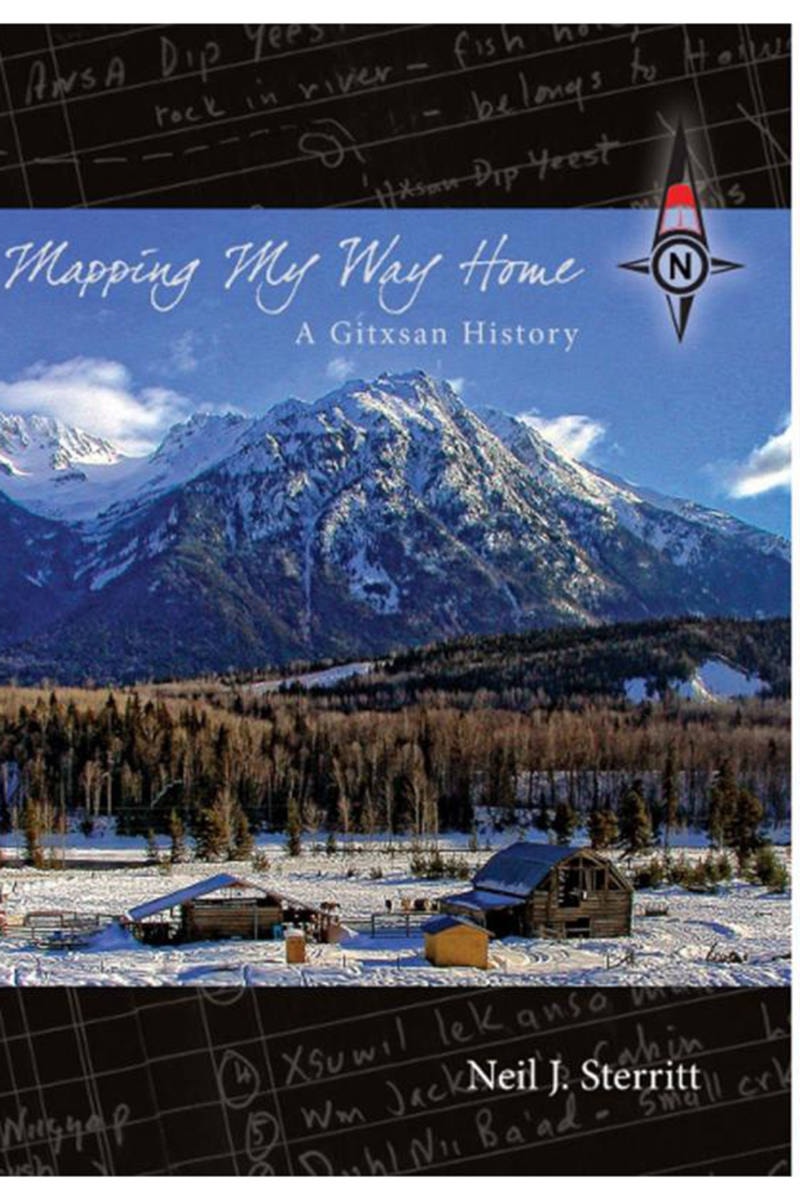People from the South Cariboo will get their chance to talk to one of the most popular figures in First Nations politics, who will be awarded the Order of BC on Dec. 14.
Neil Sterritt was the research director for the Gitxsan-Wetsuweten Tribal Council from 1977-81, president from 1981-87 and was instrumental in the Delgamuukw v. British Columbia aboriginal title case in 1997.
Sterritt will be at Nuthatch Books on Dec. 19 for a book signing for Mapping My Home: A Gitxsan History, published on April 2, 2016.
“In about 2007 my publisher, Creekstone Press in Smithers asked me to write a book on the history of Hazelton,” said Sterritt, who now lives in 150 Mile House but was born and raised in Hazelton. “I thought about it for probably six or eight months and I said I would do it but it was going to be a different kind of history and I didn’t know what that meant at the time.”
It took Sterritt ten years to research and write the book, which would go on to win the Roderick Haig-Brown Gold Medal award in 2017. The award goes to the book contributing the “most enjoyment and understanding of British Columbia.” The book also came in second place for the British Columbia Historical Federation’s annual historic writing competition, also in 2017.
The prominent Gitxsan leader found many books, such as Dr. Richard Geddes Large’s The Skeena: River of Destiny, albeit good and informative, lacked Indigenous content.
“It may be the first book that actually had a balanced perspective on that it really included all the aspects of Aboriginal history and when I say history, I’m saying way back like hundreds if not thousands of years right up to today,” said Sterritt. “It also includes the settler history from the time of Simon Fraser and Alexander Mackenzie. It includes snippets of that as well as what went on during the gold rushes and everything else.”
One of the more important aspects of Mapping My Way Home is its coverage of Indigenous rights and land titles history, which Sterritt was heavily involved in.
The turning point for land titles and rights was in 1973 when the Calder et al. V. B.C. attorney general case ended up in a split decision after Nisga’a chief Frank Arthur Calder took the provincial government to court over 2,600 square kilometres of land around the Nass River belonged to the Nisga’a people. The ruling ended up going against Calder but the court signalled aboriginal title existed opening the doors for future land claims, such as the aforementioned Delgamuukw case.
The aftermath of the case saw former prime ministers Pierre Trudeau and Jean Chrétien (who was the Minister of Indian Affairs at the time) set up the lands claim process in 1975, allowing six tribal groups in the country to negotiate a treaty. There could be only one group representing a province or territory and at the time the Nisga’a Nation was the only Indigenous people from British Columbia at the table.
However, the Gitxsan started their own research and Sterritt, who made his living with mineral exploration, started working with the elders mapping all their territories starting in 1975. They didn’t bring their case to court until 1987 and it took ten years for the decision to be reached.
“We finally won that and although the Nisga’a didn’t get full recognition for their title and rights, the Delgamuukw and Gisday-wa cases were the first time our oral histories were recognized as valid evidence in a court case and Aboriginal title began to be described,” said Sterritt.
The University of Victoria Law Department ordered the books as textbooks due to the significant coverage of more modern cases but Aboriginal Title case issues from the 1850s all the way to today.
There is a Cariboo connection in Mapping My Way Home as well. Sterritt’s grandfather used to run pack trains along the Telegraph Trail but wintered his horses and mules in the Cariboo region. His grandfather also never knew his own father who was a gold miner and owned the 122 Mile House Ranch during the 1870s.
